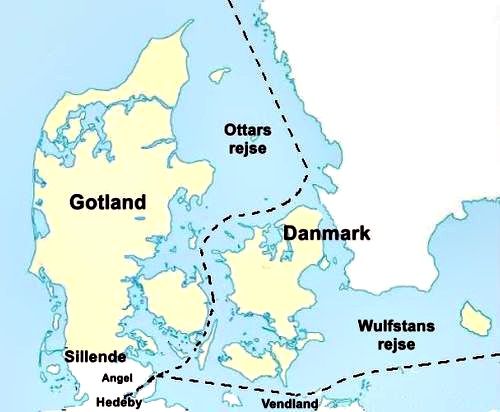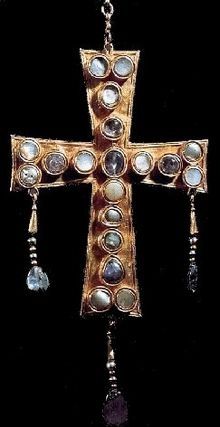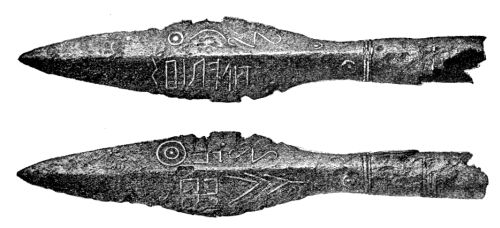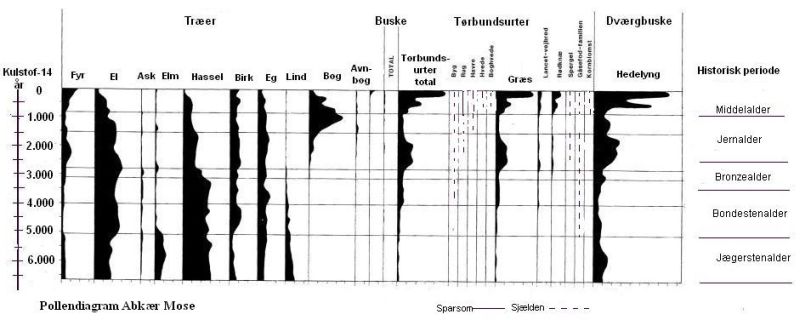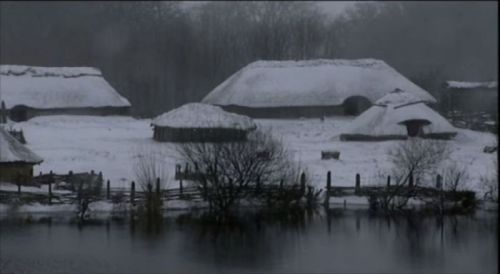
Dani, Switheudi, Thuringi and Aesirs
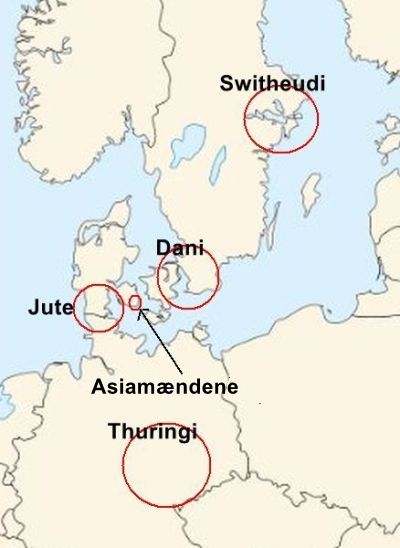
Dani, Switheudi, Thuringi and Aesirs were in all probability four groups of related people, who originally came from Asia, few in numbers.
At Tryggevælde Å (river) near Himlingøje, Valløby and Varpelev in Eastern Sjælland a number of large burial mounds have been excavated and many objects that differ significantly from the contemporary Iron Age culture’s other findings have been found. In addition, mound funerals had not been seen in Scandinavia since the first half of the Bronze Age; they were a marked break in tradition. These mounds are dated to around 200 AD, and one may assume that the represent Dani. One can imagine that they first arrived in Scania and drove the Heruls away from there. That could have taken place around 200 – 300 AD or even later.
Noble men and women have for generations been buried in large burial mounds at the Tryggevælde River with treasures such as unique silver cups, neck rings, pearl necklaces, game pieces and Roman-made cups and glass drinking horns and much more – but no weapons. Around the mounds have been found their servants and service people in more modest graves – with few or no grave goods.
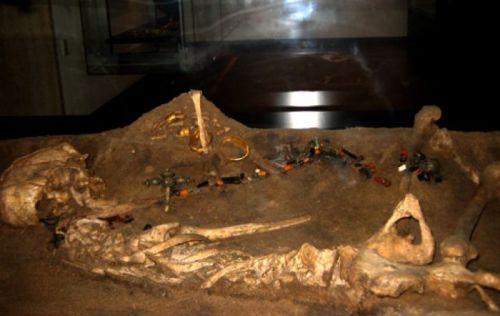 |
Women’s tomb from Himlingøje from around 200 AD found in 1949 and exhibited in the National Museum. In front of the woman are seen her gold jewelry and a long necklace with different colored beads. – Photo: Kulturjagt i Køge Bugt.
There have been noted a striking similarity between the graves at the Tryggevælde River and graves and grave goods in Thuringen and southern Saxony from the same time. It is also suggested that the Danish -lev in village names is connected to -leben in village names in Thuringen. It’s pretty likely that Dani and Thuringi were related people.
If Switheudi and Dani were of the same descent, and Dani and Thuringi were closely related peoples so all three people have been related. It is somewhat unsatisfactory for this theory that Jordanes also mentions Sweans, which are of a different race. The author has no certain knowledge, but he believes that Switheudi and Sweans are identical.
Ynglinga Saga says: “Sveigde became king after his father. He made the promise to search for Gudehjem (Gods’ Home – English: Gotham) and Odin the Old. He traveled with 12 men widely around the world; he came to Turkland and Great Svitjod and found there many kinsmen. On this journey he was away for five years, then he came back and stayed home for a while. He was out in Vanaheim and got a wife, who was named Vana; their son was named Vanlande.”
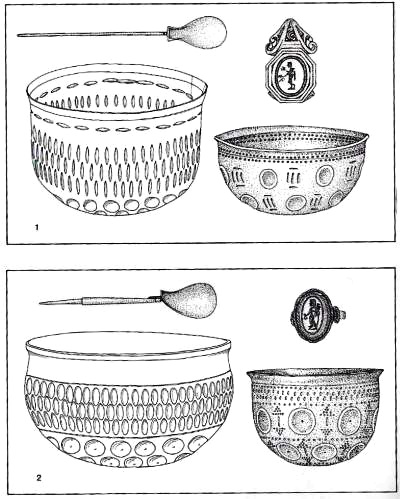
Findings from Haagerup on the island of Fyn (1) compared with findings from Leuna in Thuringen (2). In the gold finger ring from Haagerup sits an onyx stone, and in the ring from Leuna sits a carnelian, but both are adorned with a Mercury motif. The Funen on is of Roman origin, while the South Germany one is producing outside the Roman Empire. Other examples of similarities include silver spoons, glasses and silver bowls. – From Gyldendals og Politikkens Danmarks Historie 2 by Lotte Hedager.
In Old Uppsala in Sweden, there are three large burial mounds and several smaller mounds from the Late Iron Age of similar size, as the mounds at the Tryggevælde river originally must have been. Two of the large mounds contained very rich cremations graves with royal power symbols from the 500s AD.
The Eastern mound contained a 12-year-old boy and a woman; the boy’s equipment included a warrior helmet, a gold decorated single-edged sword and a bronze mirror. In the West mound, there were a man and a woman; the man’s equipment included among other things a warrior helmet decorated with carved stones, a double-edged sword with gold hilt and probably a scepter. Following Snorri Sturlason the Ynglinge lineage was the royal family of the Svears, and Old Uppsala was their burial ground.
But as the Swedish mounds are from around the year 500 AD and the Danish are from around the year 200 AD it sounds unlikely that the Dani descended from Swedes, as it is said. One has to expect that ancestors lived before descendants.
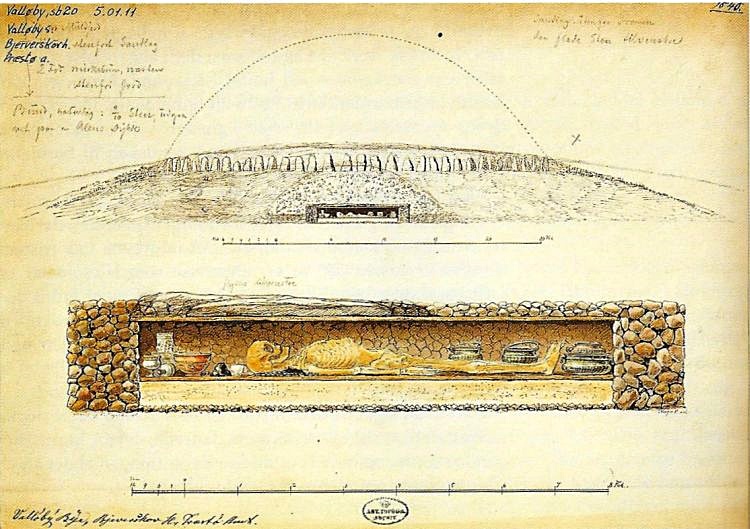 |
Reconstruction of a grave at Valløby south of Køge. The deceased is a man, who is laid to rest with a rich equipment of silver goblets, glass and bronze vessels. The excavation in the 1800’s showed that the grave had been covered by a stone surrounded mound, as shown on the drawing over the existing mound with a dashed line. Drawing by Magnus Petersen 1873.
Snorri says in the introduction to Ynglinge Saga that “in the land east of the Tanakvisl (River Don) lay a castle, called Asgård. The chief of the castle was called Odin, and it was a great offer place for the Gods. Odin was a great army man, who travelled far around and won himself many kingdoms.” – “But because Odin was visionary and skilled in magic, he knew that his descendants should live and build in the Northern part of the world. Therefore he set his brothers Ve and Vilje in charge Asgård, but himself departed with all his dianes (?) with him and many other people. First, he headed west to Gardarige (Russia) and then south to Saxland; He had many sons, he won himself a kingdom over much of Saxland and set his sons to rule the country. So he headed against north to the sea and settled on an island, it is now called Odinsoye on Fyn,” which must be Odense, which city also has Odin’s name.
 |
The mounds in Gamla Uppsala – Photo Wikipedia.
There is no direct intelligence to that the Asia men, who settled on the island of Fyn, were related to Switheudi, Dani and Thuringi. But Snorri lets Odin continue to Sweden, where he became the Ynglinge lineage’s actual ancestor, and that is suggesting that there was a relation.
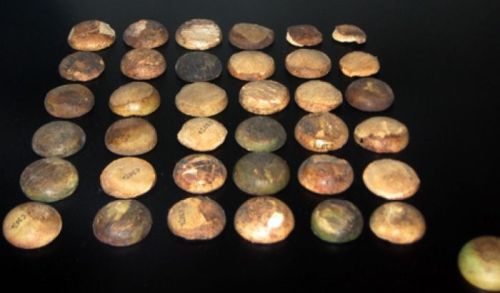 |
Game pieces of bone found in a man’s grave in Varpelev near Køge from the end of the 200’s – Photo: Kulturjagt i Køge Bugt.
It’s all quite speculative, but one can think that Thuringi means descendants after Thor, Thornings, so to say, in the same way as the Ynglings were descendants after Yngve. Snorre lists Odin’s ancestors in his preface to the Edda: “His famous ancestor was Thror, whom we call Thor, his son was Loridi, his son was Ejnridi, his son Vingethor, his son Vingener, his son Moda, his son Magni, his son Seskef, his son Bedvig, his son Atra, his son Itrmann, his son Heremod, his son Skjaldun called Skjold (shield), his son Bjaf, his son Jat, his son Gudolf, his son Finn, his son Frallaf and he had the son Vodin who was Odin.” Which must mean that Odin and his men, who settled on the island of Fyn, also regarded themselves as descendants of Thor, which one can think that Thuringi and probably Dani and Switheudi also did.
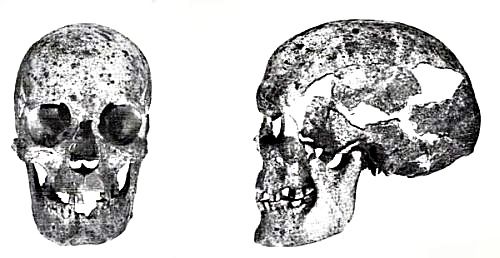 |
Dolichocephalic woman skull from Varpelev Stevns. From “Danmarks Oldtid” by Johannes Brøndsted.
Many skeletons in graves in Denmark from precisely about 200-300 AD show that the deceased were quite tall and long skulled. Thus, one of the deceased in Himlingøje had been close to 180 cm tall. The historian Palle Lauring wrote about Dani’s ethnic characteristics: “The striking many dolichocephalic skulls in the graves have been associated with the coming of the Danes, and it is worth to emphasize that the particularly long-headed appearance pretty quickly disappear from the graves again and is replaced by roughly the same situation as before. It is distinctive upper-class tombs, and we must not forget that precisely with the Danes’ conquest of the land it is about their upper class, that is a very narrow group of bloodlines, perhaps only a few families, who probably have been so inter-married that a common appearance can be understood.”
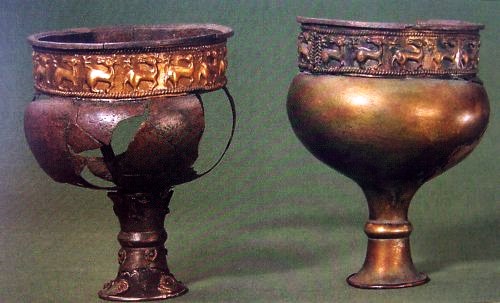
Two silver cups from Valløby at Tryggevælde Å on Stevns. This is not Roman style, the cup’s design must represent a culture that Dani had with them when they came – from Asia. Photo: verasir.dk.
Snorri’s preface to the Edda tells us why this characteristics appearance rather quickly disappeared again: “The Aesirs took wives there in the country; some married their sons with local women. All these blood-lines were so numerous that they spread all around in Sax-land and all the northern countries, so that their, the Asian men’s, tongue became the real language of these countries. Thereof, as their ancestors’ names are recorded, it is thought that it can be believed that these names have followed with this tongue and that the Aesirs have brought them with them to the northern countries, to Norway and Sweden, to Denmark and Sax-land.” – Snorre exaggerates undoubtedly the Aesirs’ linguistic influence, as Scandinavian and German still today are Germanic language, resembling Gothic, but it is most likely true that the Aesir’s have made an important contribution to the Nordic countries’ language.
Thuringia quickly was conquered by the Franks. Gregory of Tours tells how: “So he (King Theodoric) summoned the Franks, and said to them: “Be angry, I beg of you, both because of my wrong and because of the death of your kinsmen, and recollect that the Thuringi once made a violent attack upon our kinsmen and inflicted much harm on them. And they gave hostages and were willing to conclude peace with them, but the Thuringi slew the hostages with various tortures, and made an attack upon our kinsmen, took away all their property, and hung youths by the sinews of their thighs to trees, and cruelly killed more than two hundred maidens, tying them by their arms to the necks of horses, which were then headed in opposite directions, and being started by a very sharp goad tore the maidens to pieces.”
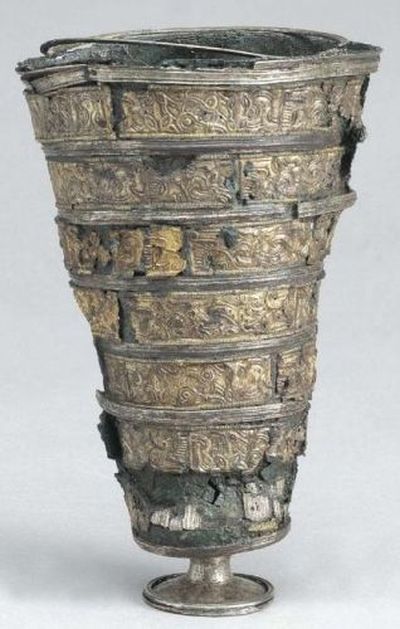
The Uppaakra cup from Uppaakra south of Lund in Scania. The cup is 165 mm. high. It is decorated with six relief band of gold in Nordic animal ornamentation style I. It is believed that the decoration on the cup is a further development of the decorations on the cups found at Tryggevælde on Sjælland. Photo: Bengt Almgren, Lund.
“And others were stretched out upon the city streets and stakes were planted in the ground, and they caused loaded wagons to pass over them, and having broken their bones they gave them to dogs and birds for food. And now Hermenfred has deceived me in what he promised and refuses to perform it at all. Behold, we have a plain word. Let us go with God’s aid against them.” They heard this and were angry at such a wrong, and with heart and mind they attacked Thuringia.”
But Thuringi did not follow the contemporary rules of fair warfare: “And the Thuringi prepared stratagems against the coming of the Franks. For they dug pits in the plain where the fight was to take place and covering the openings with thick turf they made it seem a level plain. So when they began to fight, many of the Frankish horsemen fell into these pits and it was a great obstacle to them.”
But the Franks won as always: “When finally the Thuringi saw that they were being fiercely cut to pieces and when their king Hermenfred had taken to flight, they turned their backs and came to the stream Unstrut. And there such a slaughter of the Thuringi took place that the bed of the stream was filled with heaps of corpses, and the Franks crossed upon them as if on a bridge to the further shore. After the victory was won they took possession of that country and brought it under their control.”
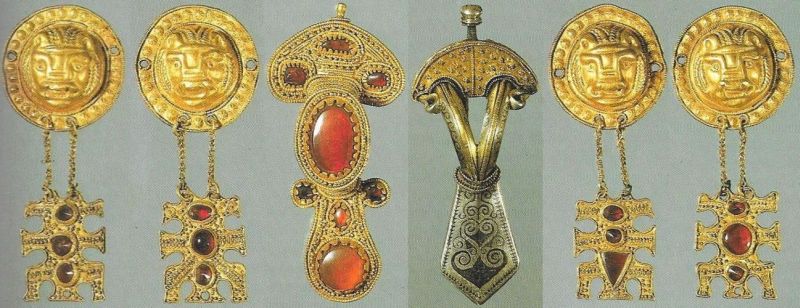 |
Selection of grave goods found in a woman’s grave woman’s grave at Kirkebakken in the village Aarslev on Fyn about 1820. In addition to several bronze dishes, bronze buckets and silver spoons the dead woman got several unique pieces of jewelry to the grave, including seven pendants with lion masks pressed in gold, semiprecious stones and clothes pins of silver. It’s interesting that they knew this animal, lion. From Gyldendal og Politikkens Danmarkshistorie 2.
In Ynglinge Saga we get some information about Switheudi’s or Swear’s culture: “Odin made it law in his countries, which previously had been law among the Aesirs. Thus he ordered that they should burn all the dead and carry their belongings into the fire with them, he said that so much fortune should each one come to Valhal with, which he had got with him on the pyre, and what he himself had dug into the ground, should also be beneficial for him. The ash they should carry out into the sea or dig into the ground. In remembering of brave men they should build a mound to their memorial, and after all men, who had been menfolk to some degree, they should erect bauta-stones, and this custom was followed long after. By winter-day they should make sacrifices for good year, by midwinter for growth and fertility, but by summer-day only for victory. All over Svitjod people paid tax to Odin, one penny for each nose, but he had to defend the country from strife and unorder and make sacrifices for them to a good year.” – “Odin died from disease in Svitjod, but when he was near death, he let himself mark with spearhead and stated that all men, who died from weapons, should belong to him.”
OFFICIAL AND REGISTEREDL CLAN CARRUTHERS CCIS SINCE 1983-CLAN OF OUR ANCESTORS
SCOTTISH CLAN – IRISH CLAN – NORSE CLAN
Preserving Our Past! Recording Our Present! Informing Our Future!
The Ancient and Honorable Carruthers Clan International Society LLC
CLANCARRUTHERS1@GMAIL.COM

CLAN CARRUTHERS INT SOCIETY CCIS HISTORIAN AND GENEALOGIST

You can find us on our main facebook pages at :
SILVER WINGS-https://www.facebook.com/CarruthersClanLLC/
GOLD WINGS – https://www.facebook.com/carrutherscarrothers.pat.9
CLAN CARRUTHERS FAMILY HISTORY – https://www.facebook.com/CarruthersClan
CLAN CARRUTHERS CCIS – https://www.facebook.com/groups/3878691252182714
CLAN CARRUTHERS INT SOCIETY- https://www.facebook.com/groups/394653845137709
CLAN CARRUTHERS – BORDER REIVERS – https://www.facebook.com/groups/434959914239094
Disclaimer Ancient and Honorable Carruthers Clan International Socie





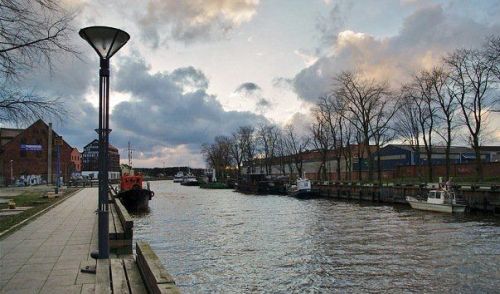
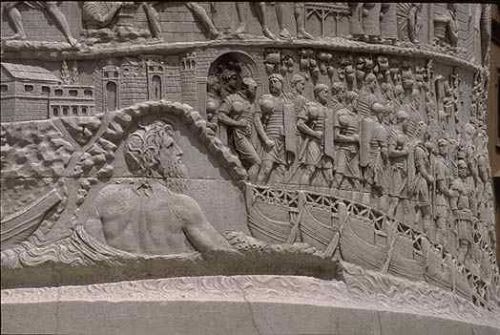
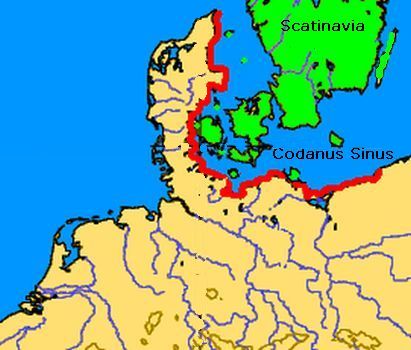
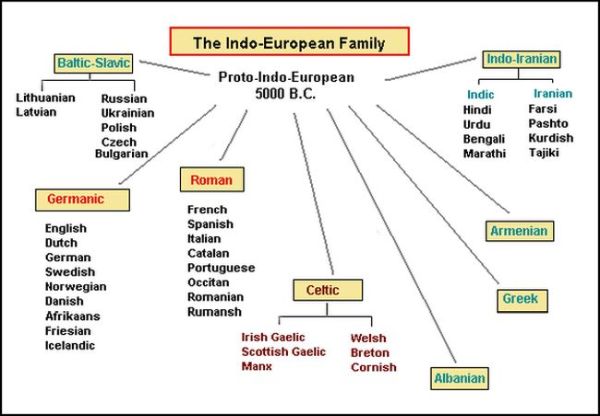
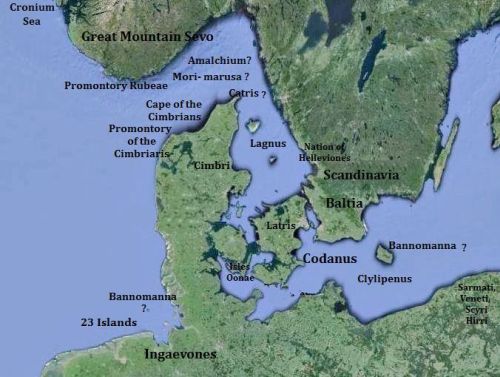


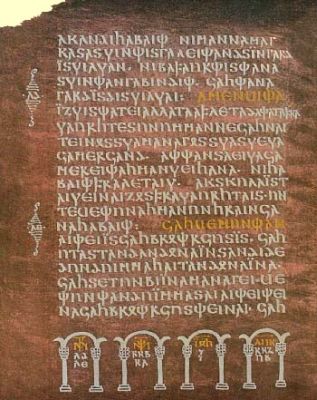


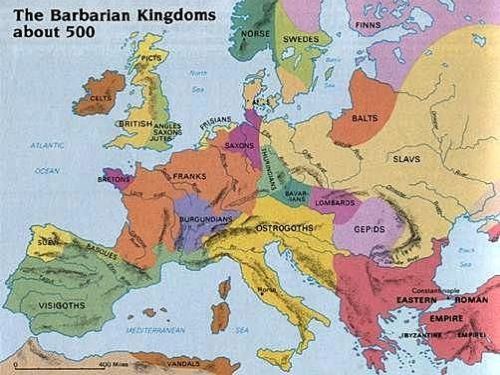 A map of Europe showing the Germanic kingdoms that were established after the downfall of the Western Roman Empire. After numerous battles and long migrations, the Western Goths managed to settle in Spain and the Eastern Goths to take possession of Italy. However, it did not last forever. From ancientweb.org.
A map of Europe showing the Germanic kingdoms that were established after the downfall of the Western Roman Empire. After numerous battles and long migrations, the Western Goths managed to settle in Spain and the Eastern Goths to take possession of Italy. However, it did not last forever. From ancientweb.org.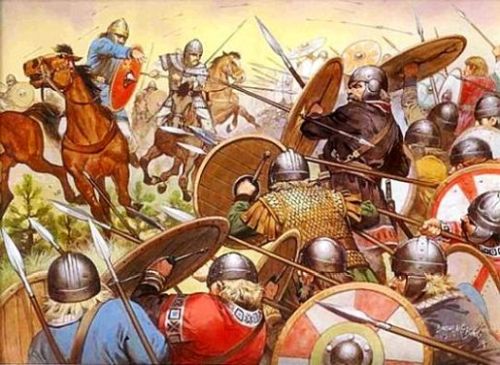 An artistic reconstruction of the Western Goths in battle with Attila’s Huns at Chalons. From ancientweb.org.
An artistic reconstruction of the Western Goths in battle with Attila’s Huns at Chalons. From ancientweb.org.
